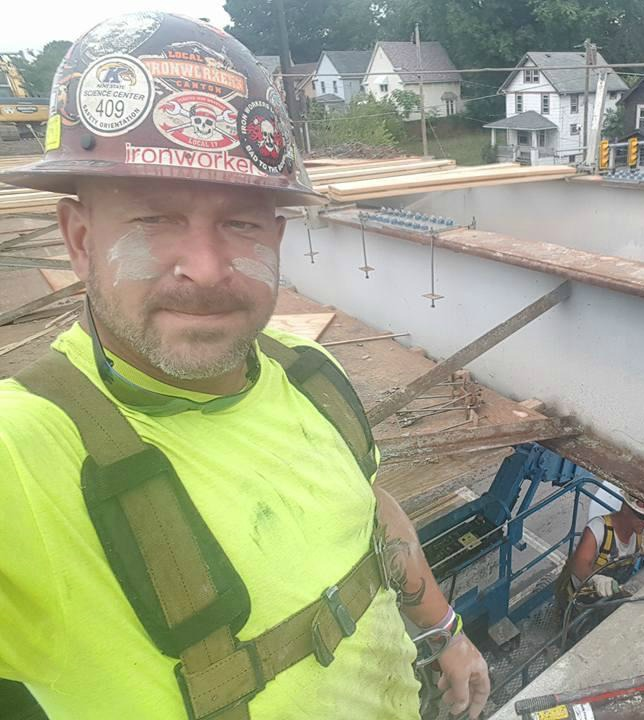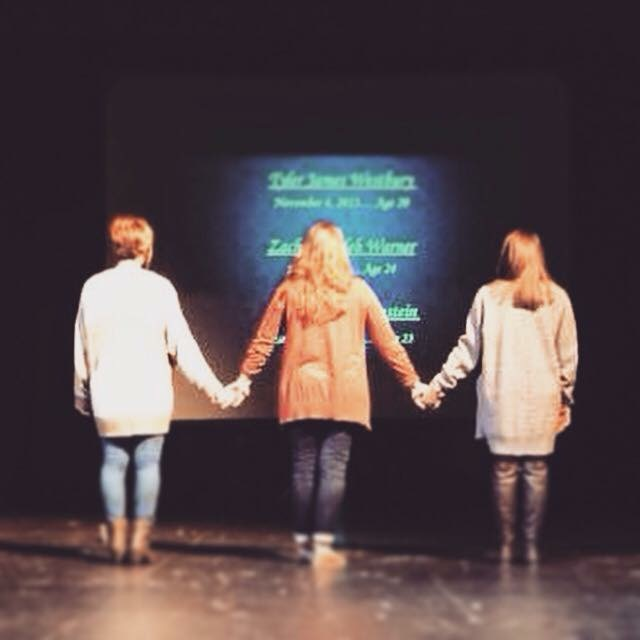[Part I in a 3-Part Series] The Hero in You: A Story of Recovery, Overcoming Adversity and Hope
Today I begin Part I in a Three-Part Series on the journey of recovery of one man. I have found this upcoming story nothing short of amazing. I hope it inspires you. I hope it gives you hope in what can sometimes be a dark world. I hope it helps you find your inner hero.
Meet Todd Rossiter.
Todd battled his addiction to drugs and alcohol for most of his life. He has an incredible story of recovery that I will share over the course of these next 3 blogs. I have known Todd’s story for quite some time, but I wanted to learn a little more so I could share it with the rest of the world in hopes that it might inspire someone else.
Todd’s parents divorced when he was 6 years. He had an amazing mother who raised him to have good morals and values. However, Todd says he always had to learn the hard way as a child or teenager. According to Todd, his grandmother was a Russian/Ukrainian woman who lived by the old testament – who believed in an eye-for-an-eye and maintained a fire and brimstone kind of perception of the world. She always told him that bad things happened to bad people. He could remember thinking, “I am a bad kid, so I must be going to hell”. At the age of 5, Todd was sexually molested, so he blamed himself for that – as a child he believed that happened to him because he was a bad kid. So, Todd grew up with a skewed perception of religion, which to him was very scary. During our talk, Todd admitted, “who would want to go through life just waiting for Hell?” He felt he had bought his ticket to Hell and was just waiting for it to happen. Up until Todd began a 12-step program, this was his only understanding of God.
Todd began drinking around the age of 13 or 14 years of age. The first time he got into trouble was at a party in 1988 at the age of sixteen. During his early to mid 20’s he moved onto harder drugs. At this time, Todd worked as an ironworker. The crew would show up at the bar first thing in the morning. Everyone would do a couple shots before work. Occasionally they might do a line of cocaine. And Todd could never order just one drink. It would always be a beer and shot. He began to believe that this was a normal part of his life. As he moved into his late 20’s and 30’s people began to tell him to slow down with his drinking. But Todd thought he was fine because he wouldn’t drink during the week, mainly drinking just Friday, Saturday, and Sundays. In 2011, Todd broke his hand and was prescribed opiate pain medication. He began using them every day, and he didn’t go a day without them. Todd was taking six 30-milligrams Percocet’s a day for 10 months, but he was eventually cut off by the doctor. At this point, he had become dependent on the pills, and without having access to get more, he turned to heroin at the age of 35. Todd was in active addiction from 2005-2014. During this time, Todd destroyed all the relationships he had. When I asked him how his addiction affected his relationships, he simply said, “I didn’t have any”. He played on the heart strings of those closest to him, manipulating them according to his needs. The only reason he even associated with his family and friends was to try to gain something from them.
Todd attempted recovery from his addiction several times. He would switch substances to feel like he was in recovery. So instead of doing heroin or taking pills, he would switch to alcohol and claim he was in recovery. Todd detoxed multiple times – laying on the couch, several times in jail, once on a park bench. According to Todd, it was awful. He would break down crying many times, wishing and praying for death. Praying not to wake up. He didn’t know how to stop. And he didn’t know how to ask for help.
I was curious how Todd finally found sobriety. He had made several attempts at it, but each time he had relapsed. So, I pressed on to find out more.
Todd had been arrested several times. The minute he was out of jail, he would go out and get high. Todd held on to a lot of anger. He felt that the world was out to get him. He would tell people, “I’m not hurting you, I’m putting drugs in me, not you.”
September 10, 2014 was his sobriety date.
In 2014, Todd had a date in court, and during his arraignment the case worker said “he is high right now “. He was angry, he was mad. He was taken back into jail – and this time sentenced to treatment. He agreed to go because he didn’t want to go to jail for 5 years. Before a spot in treatment opened up, Todd stayed in a halfway house. They wouldn’t let him go back home. He lied to the house manager and said he needed to go to the hospital. He was able to leave, and he went out and purchase drugs and then return to the home. Todd overdosed in that facility, and basically died. He was revived with multiple shots of Narcan and the paramedics had to use the paddles because his heart stopped. On the way to the hospital, Todd was told that they were going to test his blood and he would be charged with a felony for possession. He thought that was it. Once he was at the hospital, he ran out the door – no shirt, no shoes, no wallet, no phone. And then something changed his mind, and he walked back into another area of the hospital and asked to use a phone. He called his Dad and told him “I’m done. I have to do something.” At this time Todd went back into custody, spent 3 weeks in jail, and then was transferred to treatment once a bed opened up. Todd had already been through the agony of withdrawal. He no longer had a substance in his body to blame. But he still had to deal with himself. The drugs and alcohol were gone, but he still felt the way he did. Todd always used to say, “I have a drug and alcohol problem. If I stop that, I’ll be fine.” But he wasn’t fine.
According to Todd, perception of your life is a huge factor. It’s amazing how quickly your perception of life can change. While in the treatment facility, Todd and the other patients were not allowed any outside communications. No tv, no phones. However, they were allowed to read the newspaper. Early in November, while reading the Akron Beacon Journal, Todd read an article about 3 high school seniors from Lake High School who would be speaking at the end of the month about their older brothers who had passed away from heroin overdoses. Todd, along with two other patients, was able to get a special pass to go watch the girl’s presentation. This was the first time in his life that he realized how his alcoholism and addiction were affecting everybody else in his life.
As he listened to the girls talk about their very personal stories, he took away three important moments during the presentation. The first was listening to the letters read from the families that were written to the boys after they had passed away. To Todd, it was heartbreaking to hear them. Secondly, the girls projected pictures of the 3 brothers that had passed away on the large screen in the auditorium. Two of the boys were brain dead in the hospital, and then there was a picture of an empty field where Tyler Bornstein had been left to die. According to Todd, those images were burnt into his head. Finally, at the end, the girls asked the audience to stand up if they had been affected by addiction in their family. At that point, about 1/16 of the audience had stood up. After a few moments, one of the senior girls said, “Now come on, be honest.” And it was at this time that almost the entire audience stood up. Todd said it was an amazing, overwhelming feeling for him. For the first time in his life, he didn’t feel alone.
As Todd was walking out, he walked passed the three seniors who had just given the presentation. They were handing out red and black bracelets that said “Drug Use Is Life Abuse”. One of the three girls, Taylor Bornstein, handed the bracelet to Todd and said, “Please don’t ever give up”. Todd left the presentation at Lake High School feeling that maybe there was hope. That his friends and family would just need to love him from a distance for a while. Todd wore that red and black bracelet every day as a reminder of why he would keep fighting for himself.
Be sure to read Part II of this 3-part series on one man’s journey of recovery that finds him meeting his biggest challenge yet – the fight for his life after a near-fatal accident threatens all that he has worked so hard for to maintain in his recovery.




